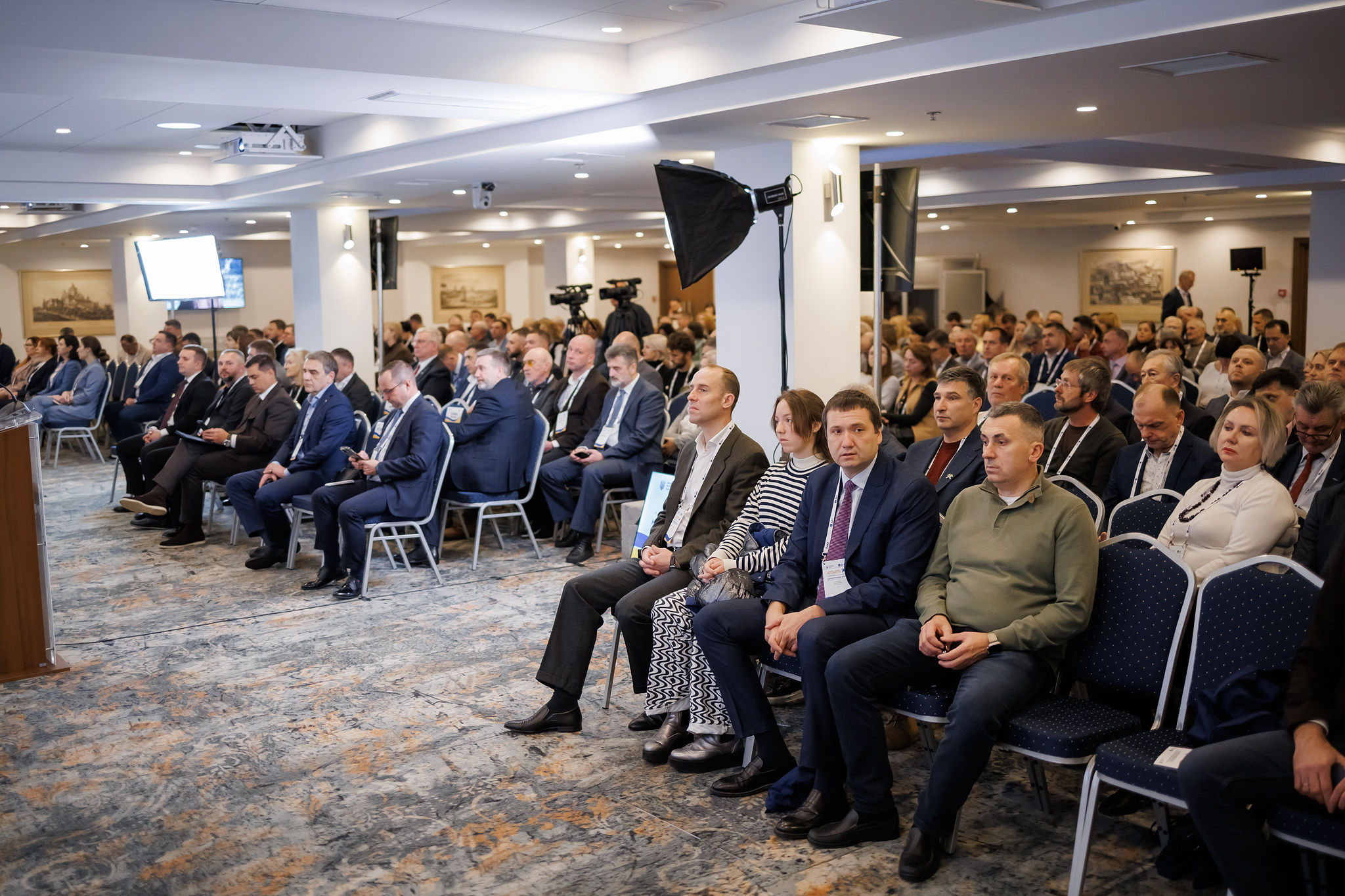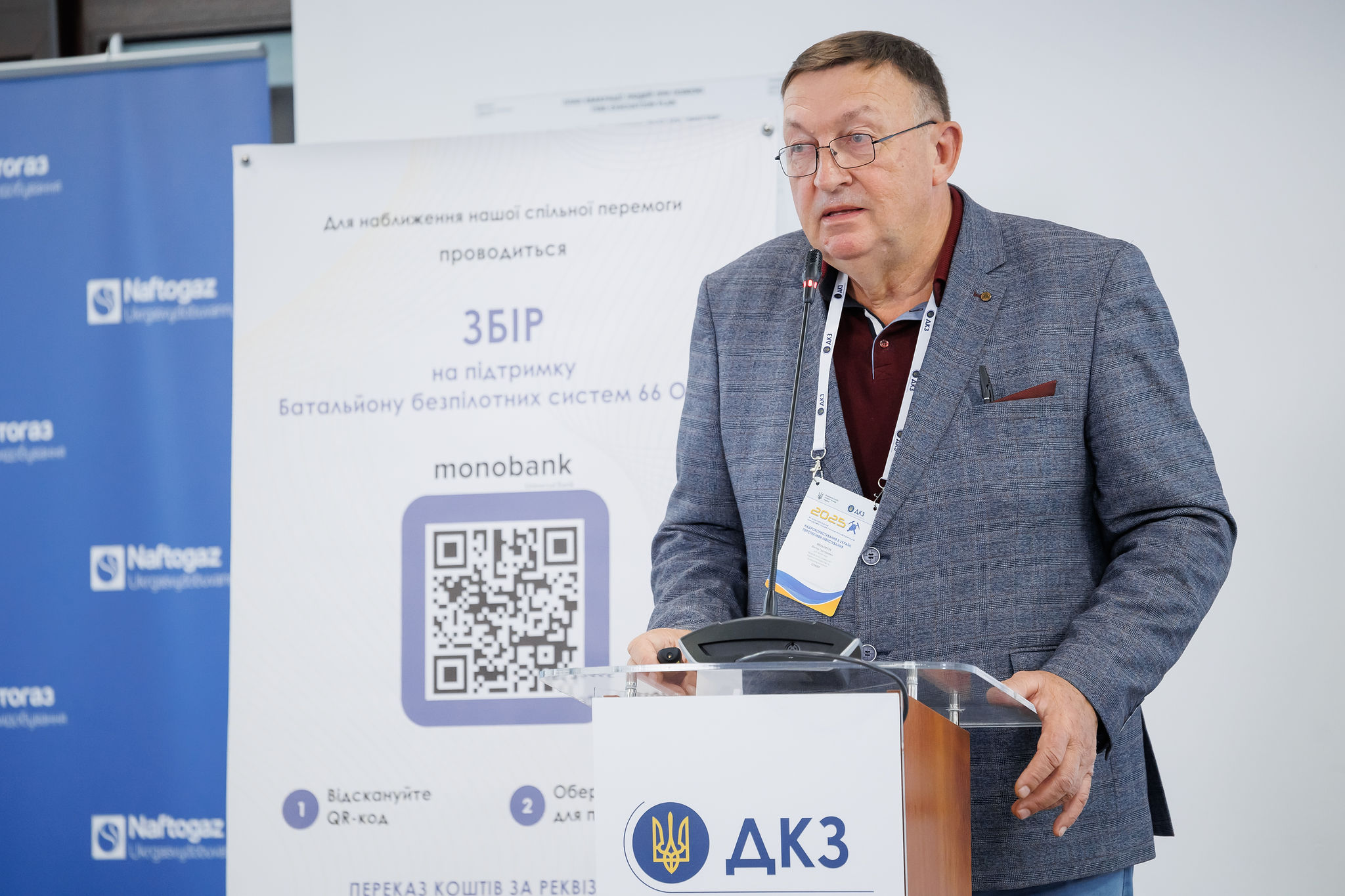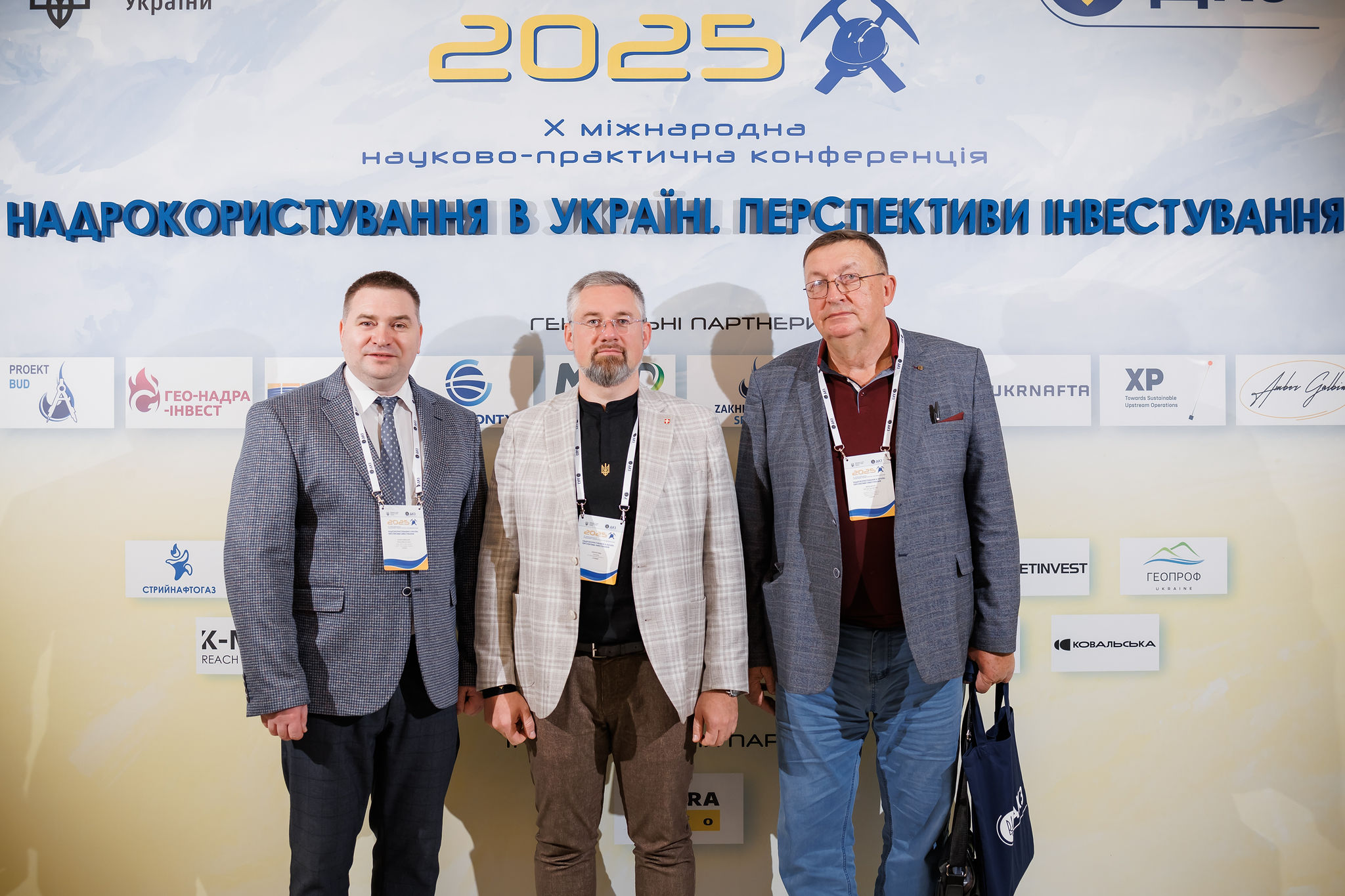Amber-Bearing Areas in Polissia: Summary of the Report at the Conference “Subsoil Use in Ukraine. Investment Prospects”
One of the key topics for Volyn, presented at the Tenth International Scientific and Practical Conference "Subsoil Use in Ukraine. Investment Prospects", was the report titled: "Restoration and Expansion of Geological-Prognostic Mapping at a Scale of 1:200,000 for the Ukrainian Polissia with Assessment of Amber Prospects within Sheets M-35-II, -III, -IV, -V, -VIII, -IX."
The presenter was Viktor Melnychuk, Doctor of Geological Sciences, Head of the Department of Geology and Hydrology at the National University of Water and Environmental Engineering in Rivne.
Anatolii Kapustiuk, Director of Municipal Enterprise Volynpryrodresurs of the Volyn Regional Council (VPR) operating in Volyn Oblast, served as co-presenter. The enterprise actively supports the development of geological studies on amber extraction in Polissia, which is crucial for the prospects of amber mining in Volyn Oblast.
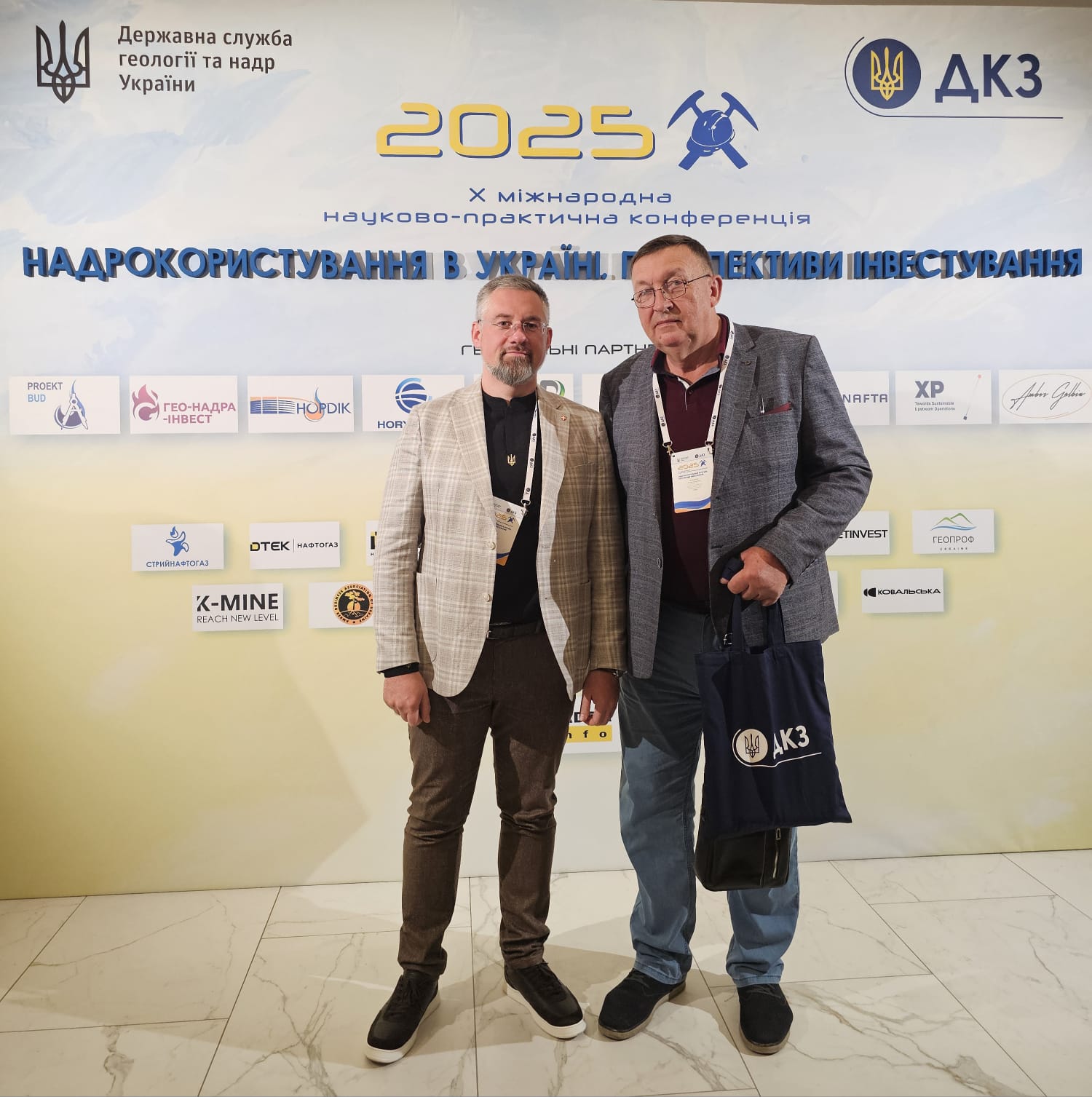
Read more about the conference at the link: Participation of ME Volynpryrodresurs in the 10th International Scientific and Practical Conference “Subsoil Use in Ukraine. Investment Prospects”
The enterprise has consistently demonstrated a responsible and scientifically grounded approach to the development of the amber industry for several years. ME Volynpryrodresurs actively engages in professional discussions, supports modern geological exploration methods, and plays a significant role in shaping the strategic vision for the development of the amber sector at the regional level — from contributing to legislative initiatives and regulatory improvements to conducting in-depth scientific and analytical studies of geological materials.
Importantly, ME Volynpryrodresurs goes beyond mere production activities by prioritizing collaboration with researchers and industry experts, recognizing that a strong research foundation is essential for the sustainable development of amber extraction. The enterprise’s involvement in preparing and presenting this report once again confirms its active role as a reliable partner in promoting legal and rational subsoil use in Polissia.
The municipal enterprise Volynpryrodresurs carries out amber extraction at four key sites in the Volyn region, operating under special permits Nos. 6172–6175 issued in 2017 and valid for 20 years. The Manevychi-1 site covers 18,060 ha, Manevychi-2 — 12,003 ha, Kamin-Kashyrskyi-1 — 7,868 ha, and Kamin-Kashyrskyi-2 — 12,594 ha.
Volynpryrodresurs is the largest enterprise established for legal amber extraction, with a total licensed area of 51,524.7 hectares (515.247 km²) across the Volyn region.
The enterprise’s operations focus on responsible amber extraction in compliance with environmental standards and occupational safety requirements. Between 2020 and 2024, the enterprise produced over 35,000 kg of amber raw material, achieving a record national output of 14,700 kg in 2023. The process includes geological exploration with drilling, environmentally safe site preparation, phased overburden removal, primary processing, and classification according to the State Gemological Center’s classifier (DKDK ISSN 2079-1186, September 2025), as well as post-mining land reclamation. The enterprise creates local jobs, pays taxes, and sells amber on domestic and international markets under strict security measures, contributing to the sustainable development of Volyn.
In addition to ME Volynpryrodresurs, the topic remains highly relevant for other subsoil users who have obtained licenses for geological exploration and amber extraction in the Polissia region.
19 Prospective Amber-Bearing Areas in Polissia
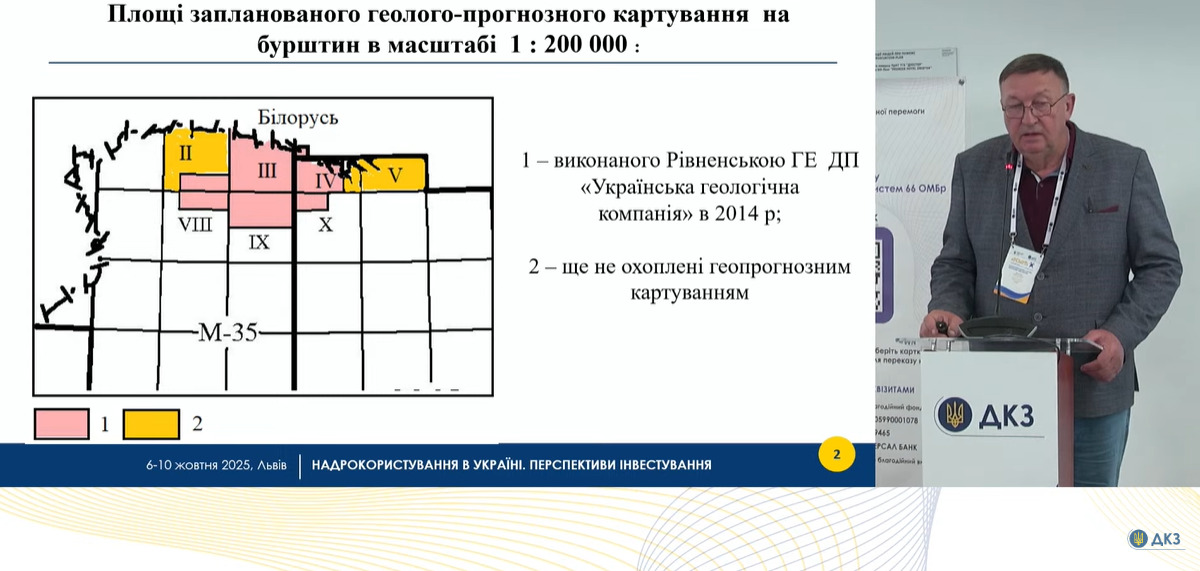
The study area covers six sheets at a scale of 1:200,000, encompassing parts of Volyn Oblast and Zhytomyr Oblast. Based on geological-prognostic mapping (GPM) conducted between 2004 and 2015, 19 prospective amber-bearing areas were identified. Among them are well-known deposits such as Klesiv, Vilne, and Volodymyrets Skhidnyi. Areas surveyed in 2014 are marked in pink on the maps.
Areas marked in pink on the maps represent territories studied in 2014. These works, which lasted 11 years, resulted in the creation of a database that now serves as the foundation for identifying promising amber-bearing sites.
Areas marked in yellow represent territories that have not yet been covered by geological predictive mapping and therefore require additional research to assess their amber-bearing potential.
The results of the 2004–2015 geological predictive mapping form the basis for the activities of the State Service of Geology and Subsoil of Ukraine (Derzhheonadra). Using these data, promising amber-bearing plots are identified and offered for auction, facilitating investment in amber extraction and ensuring the rational use of the region’s natural resources.
Over time, geological-prognostic mapping requires revision and modernisation to address new challenges and improve methodology. Previous geological-prognostic mapping efforts identified search criteria and prognostic factors of amber occurrence, which now need refinement.
Search criteria include documented amber finds and areas of illegal excavations, indicating potential deposits.
Prognostic factors of the first order, which can be determined visually, encompass stratigraphic, structural-tectonic, lithological-facies aspects, as well as factors of erosional truncation and incision.
Prognostic factors of the second order, based on paleoreconstructions, include paleogeographic and paleogeomorphological aspects.
Характеристика бурштиноносних ресурсів
Основні ресурси та промислові запаси бурштину на Поліссі пов’язані з осадовими прибережно-морськими фаціями межигірської світи олігоцену, представленими піщано-глинистими відкладами. Бурштиноносні пласти залягають на глибинах від 2 до 12 метрів, їхня потужність коливається від 1 до 6 метрів. Промислові вмісти бурштину-сирцю становлять від 10 до 250 г/м³, із середнім значенням 50 мг/м³.
Ці характеристики вказують на значний потенціал регіону для промислового видобутку.
Передумови виконання робіт із розширення геолого-прогнозного картування на буртин
Over the past decade, geological exploration of the Prypiat Amber Basin has significantly intensified, driven both by the activities of licensed subsoil users and by illegal extraction in Rivne Oblast and Zhytomyr Oblast. However, the scale of illegal prospecting and mining has far exceeded that of legal operations, substantially impacting subsoil conditions and complicating the planning of rational development of amber resources.
In Polissia, large prospective areas totaling approximately 8,000 hectares remain affected by illegal extraction. At the same time, roughly half of this area has not yet been geologically assessed for amber potential.
Certain topographic sheets remain understud:
M-35-II and M-35-V at the PTK-200 scale have effectively not been studied;
М-35-II, –III та –IX не були охоплені геолого-довідковими роботами (ГДП-200);
Their primary basis remains the materials of Derzhheolkarta-200, compiled in the 1960s–1970s.
Furthermore, the amber potential of aeolian deposits in Polissia has not been studied, despite their high potential demonstrated in neighbouring Eastern Poland, where several new deposits of commercial-grade amber have been discovered. Unlike Oligocene deposits, the average amber content in samples from the Niedzwiada-II deposit in Poland is 1,038.5 g/m³ — 20 times higher than the average for Polissia amber deposits. Therefore, research into aeolian deposits is highly relevant.
Modern search criteria and prognostic factors for amber occurrence also require updating and refinement. This is essential to establish a reliable methodological framework for the new stage of geological-prognostic mapping (GPM-200), which will enable more accurate delineation of prospective areas and ensure efficient resource management.
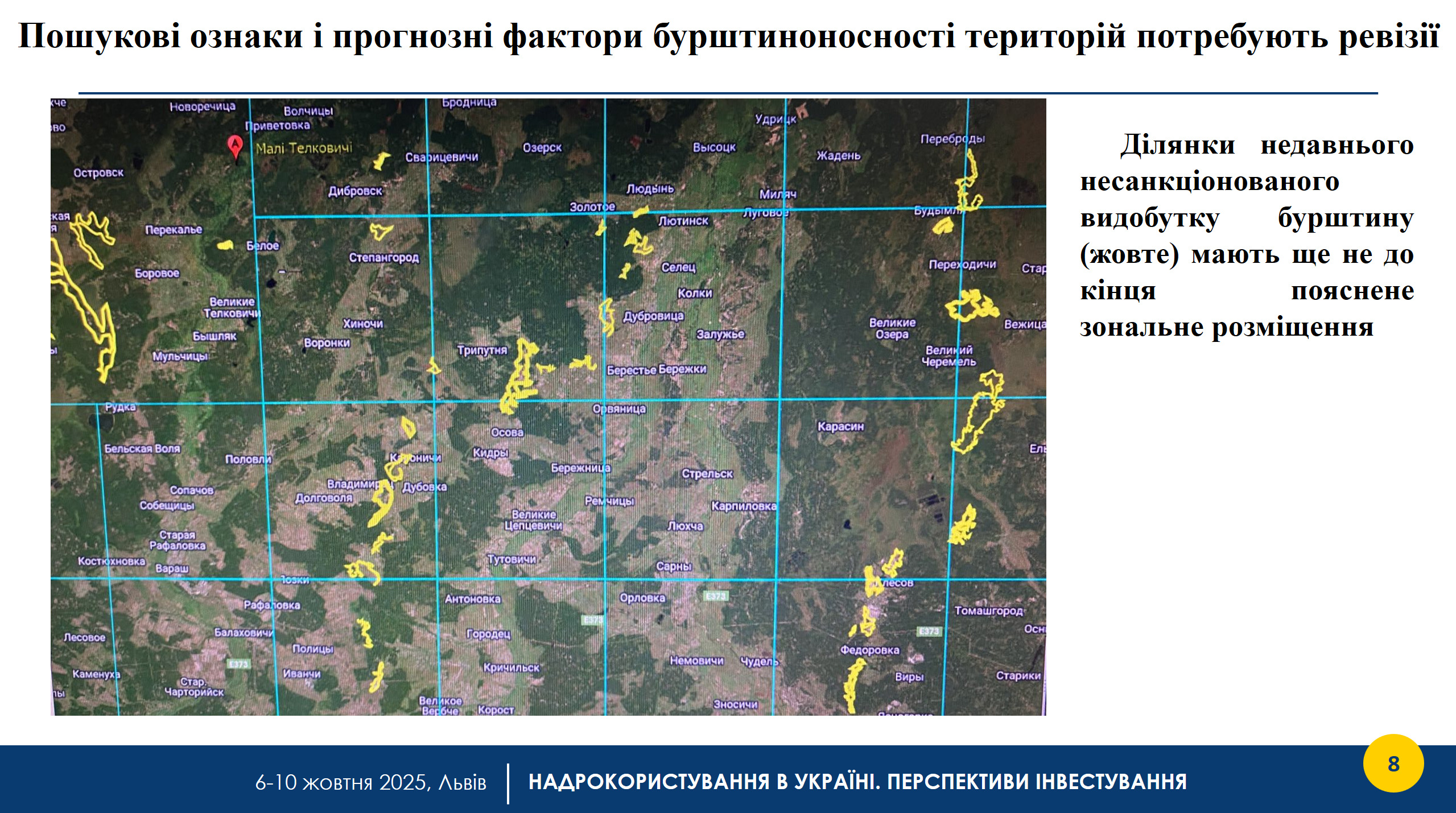
The structural-tectonic prognostic factor also requires revision regarding the pattern that, near faults associated with karst paleodepressions (amber traps) on the Cretaceous surface, the number of amber pieces is higher.
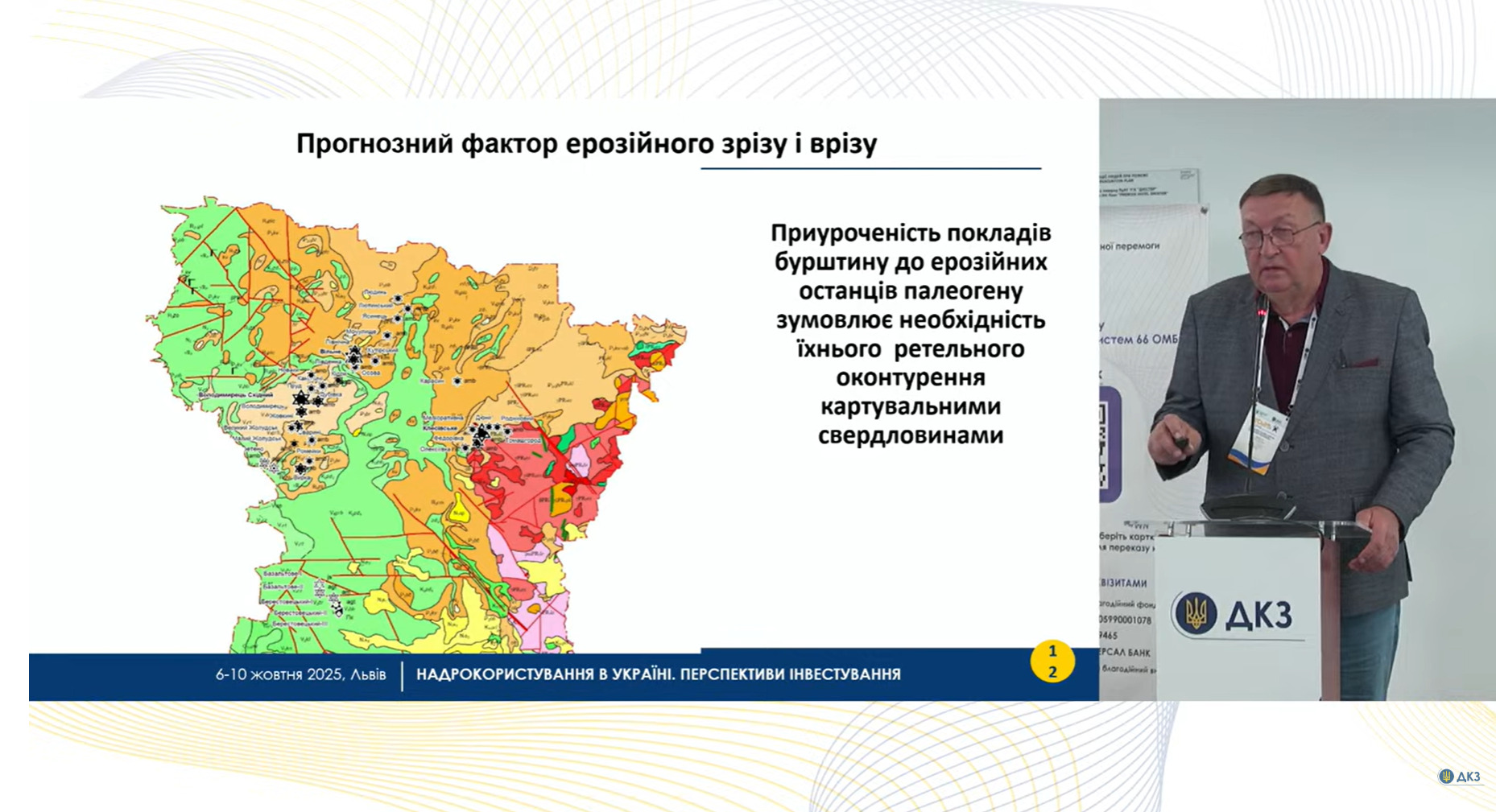
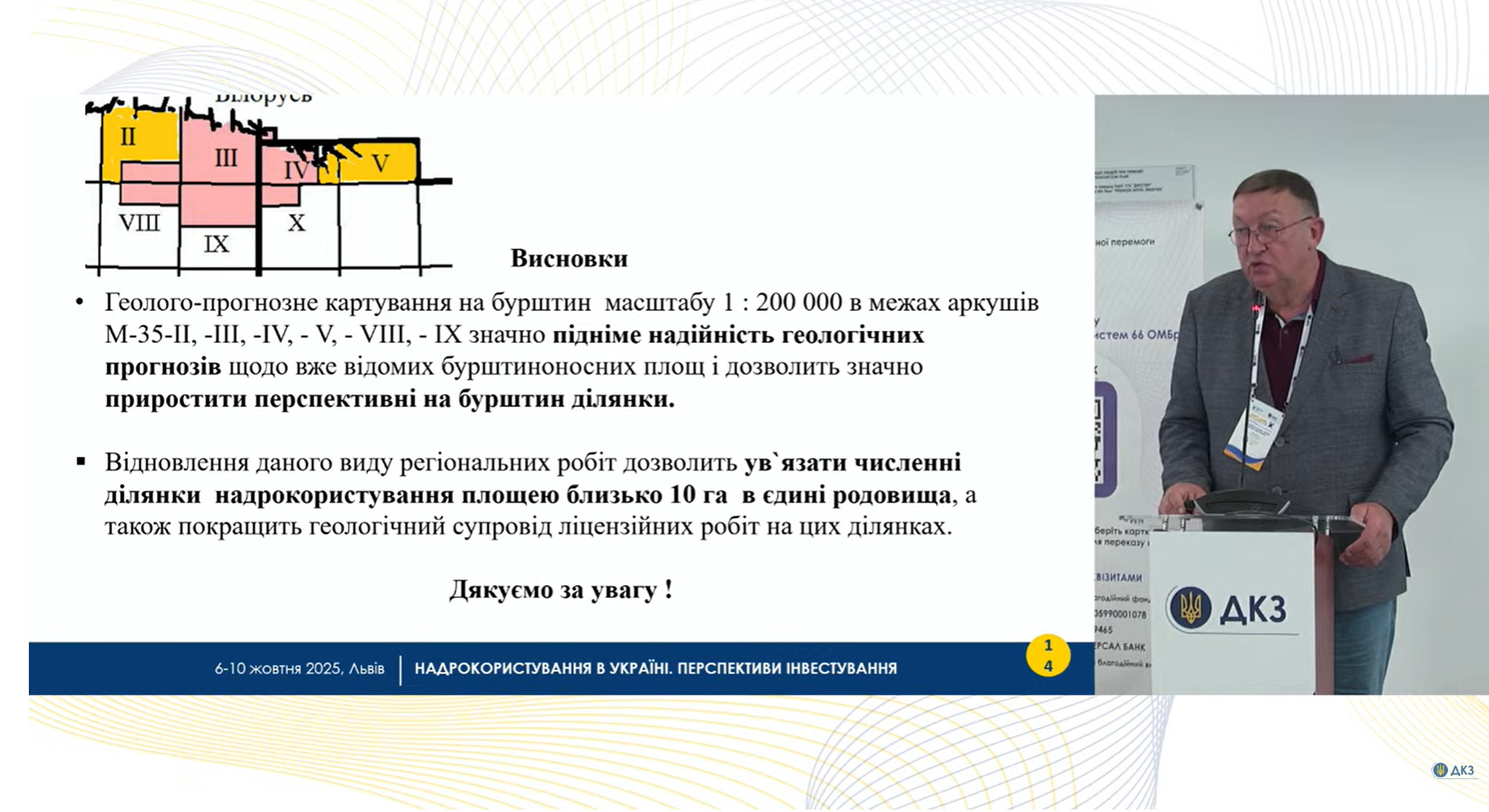
In summary, the report confidently concludes that updating and expanding geological-prognostic mapping of amber-bearing territories in Ukrainian Polissia is a critical strategic step for the further development of the amber industry, both in Volyn and across Ukraine as a whole. Modern geological studies based on advanced analytical methods will enable more precise identificationure identification of prospective areas, ensure rational subsoil use, and establish a scientifically grounded foundation for state planning and regional investment attractiveness.
